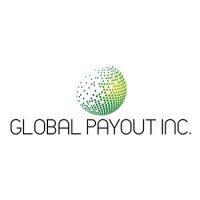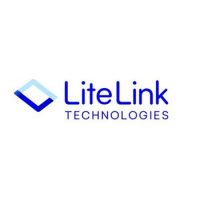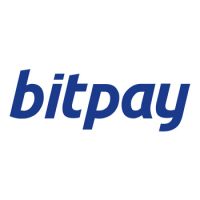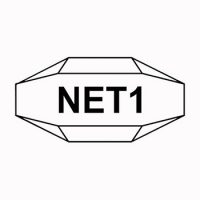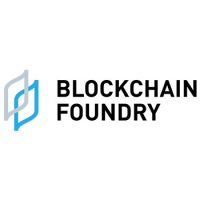Blockchain
The Death of the $2 Trillion Auto Industry Will Come Sooner Than Expected

Tesla is now bigger than Exxon. BlackRock has taken over Wall Street. Even unprofitable, Uber and Lyft are threatening to overtake the $1-trillion auto industry and they’ve only scratched the surface. Now, the worldwide $2-trillion auto industry is next in line for disruption. Mentioned in today’s commentary includes: BlackRock, Inc. (NYSE: BLK), Uber Technologies, Inc. (NYSE: UBER), Facebook, Inc. (NASDAQ: FB), Alphabet Inc. (NASDAQ: GOOGL), Microsoft Corporation (NASDAQ: MSFT).
This is the Fourth Industrial Revolution–kicked into high-speed gear by a global pandemic. And it’s all about tech-driven freedom.
For the auto industry, in particular, it’s a double threat: Tesla is now the most valuable car maker “of all time“. And with combined market caps of some $70 billion, Uber and Lyft are also severely disrupting the giant auto industry.
Tesla is worth almost $225 billion (or quarter of a trillion dollars), while the top three American automakers–GM, Ford and Chrysler–are worth around $70 billion–the same as Uber and Lyft. But while Tesla’s EV threat to the industry is clear, the ride-sharing giants’ business models are broken. Now, they may be about to find themselves on the wrong end of the disruption.
The newest threat to Uber, Lyft and the trillion-dollar personal ownership auto industry comes out of Canada’s “Silicon Valley”. It’s on the right side of history: In lock-step with Tesla’s EVs and BlackRock’s “impact investing” takeover of Wall Street …
Launched in 2019, Facedrive (FD.V) (FDVRF) is leading the evolution of shared mobility–from EV and carbon-offset ride-sharing to acquisition-hungry food delivery, healthcare services and even COVID tracing tech.
It’s got the new business model to lure in big capital that’s tired of the giants’ cash burn, bad press and endless unprofitability. It views shared mobility as much more than a ride: This is about technology, and Facedrive has launched multiple revenue streams that take advantage of the rider relationship. Now, it’s starting to go international.
A series of smart acquisitions and new service launches have positioned it to be a key challenger to the shared mobility throne. But it’s about to get even more exciting, with a government endorsement for high-tech COVID tracing and new partnerships on the boardroom deal table …
Here are 5 reasons to keep a close eye on this burgeoning sector right now:
#1 This Is What Big Capital Wants
There’s a reason BlackRock is blowing Wall Street out of the water right now–sustainable investing. It’s the ethical squeeze of the century because it’s not just about the moral high ground anymore–it’s about making money.
BlackRock (BLK) has now replaced Goldman Sachs to become the most important banking company in the world. BlackRock is all about technology, and all about mitigating risk through sustainable companies. With well over $7.4 trillion in assets under management, and clients in over 100 different countries, it’s safe to say that BlackRock has played a vital role in shifting investors’ perspectives in the ESG field.
And savvy companies are following suit. In fact, where Facedrive launched its coup. Facedrive’s next-gen ride-sharing is the first to offer customers a choice for every ride; whether they want an EV, a hybrid, or a conventional car. Then it offsets CO2 by planting trees along the way.
The Canadian startup has positioned itself to help solve ride-sharing’s environmental problem by changing its footprint, —and aims to do so without sacrificing profit, which Uber has never even made anyway.
Globally each year, plants remove about 25% of the carbon emissions produced by human activities such as burning fossil fuels while a similar amount ends up in the oceans. So, Facedrive is getting back to Mother Nature–and millennials and investors are loving it.
#2 Conscious Healthcare
Facedrive engineered another major coup last month when it launched TraceSCAN, a homegrown Canadian COVID-19 tracing solution and the only viable application that features Bluetooth wearable tech integration. Right off the bat, it partnered with LiUNA–one of the largest labor unions in the world–to help protect the health and safety of its 130,000 members and their families in Canada.
Now, solidified its power as the leader in this space in Canada, with a government support to deploy TraceSCAN.
Not only did Facedrive’s TraceSCAN just get the official endorsement from the Government of Ontario as technology that can effectively help trace coronavirus infections, but the government is encouraging its deployment across all major sites–from Parliament Hill’s major renovation project in Ottawa, to corporate offices, sporting events, healthcare facilities, long-term care facilities and outdoor venues.
#3 Innovative Revenue VS Irresponsible Cash Burn
Facedrive (FD.V) (FDVRF) isn’t just challenging Uber in the ride-sharing space. And it isn’t just the mobile leader of COVID-19 tracing tech in Canada–it’s now challenging the food delivery giants, too.
Uber (UBER) is the de facto leader in this field currently thanks to its Uber Eats branch. And now it’s looking to expand in big ways. Earlier this year, it was prepared to pay a premium for the Grubhub–the delivery service with the biggest US market share. But that deal fell through and now Uber has to settle for potentially taking over the much smaller Postmates.
Facedrive is also pursuing aggressive expansion in this space–but not paying premium prices like Uber has done.
In May, Facedrive entered into a binding term sheet to acquire the assets of Foodora Canada, a subsidiary of giant Delivery Hero–the $20-billion multinational food delivery service. This could turn out to be another major coup for Facedrive because Delivery Hero is one of the best–operating food delivery services in 40 countries and services more than 500,000 restaurants with a brand that doesn’t have the negative baggage of Uber Eats or DoorDash.
This new face of “sharing” is cutting a food delivery acquisition deal for what is expected to be a reasonable price. And it’s acquiring from Delivery Hero–the only company with a good reputation in this business, earning it the moniker of “United Nations of food delivery”. That’s because Delivery Hero spans 28 brands in over 40 countries. And it makes restaurants happy instead of gouging them.
Overnight, Facedrive is set to position itself into the top echelon of Canadian food delivery services. Then targeting international expansion. The winner of this war will likely be the new sharing business model that defies the out-of-control cash burn, broadens the revenue potential and wins the hearts and minds of every stakeholder in the chain, including drivers and restaurants.
#4 International Branding
What millenials know, and what millennials want is this: A company that recognizes that ride-sharing isn’t going to work unless it’s a lifestyle, not just a way to get from Point A to Point B.
It has to offer more, be more convenient, responsible and have a positive impact on the world around one. That’s what the giants just don’t get. They should, because millennial money is big money. Millennials have changed the future of investing.
That old adage that any publicity is good publicity no longer holds water. Bad publicity now resonates with massively powerful shareholder activism.
The most often used phrase about the Uber brand at this point is that it’s a service everyone loves to hate and hates to love. Now, with Facedrive, riders have a choice, and that choice is getting ready to go international.
#5 Where Canada Trumps Silicon Valley
As we’ve already seen in Silicon Valley, tech giants across the board are diving head-first into the sustainability push. Facebook (FB), for its part, has taken an innovative approach in its efforts to reduce its carbon footprint. Its data centers are some of the most resource-efficient on the planet, and it’s become an example for the entire industry. And by the end of the year, it will have 100% of its data centers running on green energy. A massive and ambitious undertaking. But if anyone can do it, it’s Facebook.
Not to be outdone, Google (GOOGL) is jumping on the green bandwagon, as well. It’s focus is on raising the bar for smarter and more efficient use of the world’s limited resources. It is building sustainable, energy-efficient data centers and workplaces. It is also harnessing artificial intelligence to utilize energy more efficiently.
While Google completely rethinks the game for its own operations, it is also creating a completely sustainable supply chain, working with companies around the globe to help them integrate their own sustainable systems.
Microsoft (MSFT)is one of the most innovative and well-known companies within the tech sector, but its Windows platform is the most widely used operating system on the planet. First launched in 1985, Windows has shaped what is expected from a personal home computer.
But Microsoft is appealing to investors for more just its Windows platform. It is diving head first into an entirely new market. With key partnerships utilizing and implementing blockchain technology, the company’s upside could have huge potential as the tech takes off.
Not only has it always been on the cutting edge of innovation, it’s taking a serious stance on the climate crisis. In fact, it’s pushing so hard that it is aiming to be carbon NEGATIVE by 2030. That’s a huge pledge. And if anyone can do it, it’s Microsoft.
But the United States’ crackdown on immigration has driven innovation north of the border. Ontario’s Waterloo “Technology Triangle” is pumping out some of the most innovative new tech these days. And it’s positioned to challenge Silicon Valley in both environmentally conscious and tech driven solutions with bold new startups such as Facedrive, whose Chairman and CEO, Sayan Navaratnam, is all about identifying and running with trends before they become mega. He saw where Uber and Lyft would trip up years before it became clear to everyone else.
That’s a lot of potential revenue streams that Facedrive (FD.V) (FDVRF) is latching onto. In the realm of “shared mobility”, the possibilities are almost endless. Its taking its “people and planet first” business model–the one that is in lockstep with the $30-billion ESG investing trend–international.
By. Michael Drew
** IMPORTANT, BY READING OUR CONTENT YOU EXPLICITLY AGREE TO THE FOLLOWING. PLEASE READ CAREFULLY **
Forward-Looking Statements
This publication contains forward-looking information which is subject to a variety of risks and uncertainties and other factors that could cause actual events or results to differ from those projected in the forward-looking statements. Forward looking statements in this publication include that the demand for ride sharing services will grow, and transportation as a service industry will reach $8 trillion; that the demand for environmentally conscientious ride sharing services companies in particular will grow quickly and take a much larger share of the market; that Facedrive’s TraceScan app will be adopted by other parties including government; that Facedrive’s marketplace will offer many more sustainable goods and services, and grow revenues outside of ride-sharing; that new products co-branded by Bel Air and Facedrive will sell well; that Facedrive can achieve its environmental goals without sacrificing profit; that Facedrive Foods will expand to other regions outside southern Ontario soon and will close its purchase of Foodora; that Facedrive will be able to fund its capital requirements in the near term and long term; and that Facedrive will be able to carry out its business plans. These forward-looking statements are subject to a variety of risks and uncertainties and other factors that could cause actual events or results to differ materially from those projected in the forward-looking information. Risks that could change or prevent these statements from coming to fruition include changing governmental laws and policies; the company’s ability to obtain and retain necessary licensing in each geographical area in which it operates; the success of the company’s expansion activities and whether markets justify additional expansion; the TraceScan app may not be adopted because of better apps offered by competitors or because of expense the ability of the company to attract a sufficient number of drivers to meet the demands of customer riders; the ability of the company to attract drivers who have electric vehicles and hybrid cars; the ability of Facedrive to attract providers of good and services for partnerships on terms acceptable to both parties, and on profitable terms for Facedrive; that the products co-branded by Facedrive may not be as merchantable as expected; that Facedrive does not close the purchase of Foodora and even if it does, the purchase does not bring the customers, partnerships or revenues expected; the ability of the company to keep operating costs and customer charges competitive with other ride-hailing companies; and the company’s ability to continue agreements on affordable terms with existing or new tree planting enterprises in order to retain profits. The forward-looking information contained herein is given as of the date hereof and we assume no responsibility to update or revise such information to reflect new events or circumstances, except as required by law.
Blockchain
Astra Fintech Announces Establishment of Korea HQ, Strengthening Commitment to Solana Ecosystem and Regional Expansion

Astra Fintech
Blockchain
Blocks & Headlines: Today in Blockchain – May 9, 2025

Welcome to Blocks & Headlines, your daily deep-dive into the most impactful movements in blockchain technology and the cryptocurrency sector. In today’s edition, we unpack five major stories that illuminate trends in funding, sustainability, payment innovation, banking collaborations, and technical interoperability—all vital signposts for developers, investors, and Web3 enthusiasts. Here’s what’s on the docket:
-
Camp Network’s New IP-Focused Testnet
-
Blockchain for Sustainable Packaging
-
Meta’s Blockchain-Based Payment System Plans
-
Mocse Credit Union Joins Metal Blockchain’s Innovation Program
-
Apex Fusion on the Urgency of Blockchain Defragmentation
Through concise reporting, opinion-driven analysis, and SEO-optimized insights—featuring keywords like blockchain, cryptocurrency, Web3, DeFi, and NFTs—we’ll explore how these developments shape the next wave of decentralized finance, enterprise adoption, and mass onboarding.
1. Camp Network Launches Testnet for IP-Focused Blockchain
What Happened:
Camp Network has unveiled its long-anticipated testnet following a $30 million funding round led by leading crypto VCs. This new network is tailored for intellectual property (IP) asset tokenization, aiming to streamline rights management and royalty payments via smart contracts.
-
Technical Highlights:
-
Modular Consensus: Hybrid PoS/PoA consensus that allows IP rightsholders to validate transactions.
-
On-Chain Licensing: Smart contracts enabling programmable licensing terms, automated royalty splits, and revocable access controls.
-
Interoperability: Bridges to Ethereum and Polygon enable seamless asset transfers and liquidity provisioning.
-
Analysis & Implications:
By focusing on IP tokenization, Camp Network addresses a glaring gap in current NFT platforms, which often lack robust legal-framework integration. This specialization could catalyze:
-
New Revenue Models: Musicians, authors, and inventors can fractionalize royalties, unlocking liquidity and democratizing investment in creative works.
-
Institutional Adoption: Traditional publishers and studios may pilot tokenized licensing, accelerating blockchain’s entrée into regulated industries.
-
Secondary Markets: With on-chain licensing data, marketplaces can enforce provenance and anti-fraud measures more effectively.
Camp Network’s testnet success will hinge on developer tooling, legal partnerships, and gas-fee economics. Should it deliver a smooth UX and clear ROI for rightsholders, it could set a new standard for Web3 IP infrastructure.
Source: The Block
2. Blockchain as a Sustainable Packaging Game-Changer
What Happened:
A recent report explores how blockchain can revolutionize sustainable packaging by delivering end-to-end supply-chain transparency. The solution combines on-chain tracking of materials, IoT sensor data for carbon footprint measurement, and tokenized incentives for recycling.
-
Key Components:
-
Immutable Traceability: Each packaging component is logged on a public ledger, enabling consumers to verify sustainable sourcing.
-
Carbon Credit Tokens: Brands earn tokenized credits when they hit recycling targets, tradable on carbon-market DAOs.
-
Consumer-Facing Apps: QR-code scanning interfaces reveal environmental impact metrics and reward programs.
-
Analysis & Implications:
Integrating blockchain with sustainable packaging tackles greenwashing and fragmented reporting. The ability to tie physical materials to on-chain records introduces:
-
Enhanced Accountability: Brands face real-time public scrutiny of ESG claims, improving trust and regulatory compliance.
-
Market Mechanisms: Carbon credit tokens linking packaging to broader DeFi ecosystems incentivize circular economy behaviors.
-
Consumer Engagement: NFTs or loyalty tokens tied to sustainable purchases could accelerate brand loyalty in eco-conscious demographics.
This convergence of blockchain, IoT, and token economics exemplifies how decentralized technologies can underpin not only financial systems but also planetary stewardship.
Source: Yahoo Finance
3. Meta Plans New Blockchain-Based Payment System
What Happened:
Meta is reportedly developing a blockchain-powered payment network to underpin its digital wallet ambitions, aiming to facilitate low-fee remittances, in-app purchases, and peer-to-peer transfers across Facebook, Instagram, and WhatsApp.
-
Proposed Features:
-
Cross-Border Settlements: Utilizing stablecoins pegged to major fiat currencies to avoid volatility.
-
Layer-2 Scalability: Built atop an Ethereum Layer-2 or a proprietary chain to ensure sub-second confirmation times and minimal fees.
-
Regulatory Compliance: On-chain KYC/AML checks integrated via permissioned sidechains.
-
Analysis & Implications:
Meta’s push into blockchain payments could reshape the competitive landscape:
-
Crypto On-Ramp: With 3 billion+ monthly users, built-in wallet functionality could massively expand mainstream cryptocurrency adoption.
-
Disintermediation Risk: Traditional payment processors and remittance services face margin compression as Meta internalizes transaction flows.
-
Regulatory Scrutiny: Centralized control of a global payments network raises data-privacy and antitrust questions, likely attracting significant oversight.
If Meta balances decentralization ethos with compliance demands, it could serve as a blueprint for other Big Tech firms eyeing Web3 integration.
Source: Dig.watch
4. Mocse Credit Union Joins Metal Blockchain’s Banking Innovation Program
What Happened:
Mocse Credit Union has signed on to Metal Blockchain’s Banking Innovation Program, a consortium designed to accelerate pilot projects in tokenized lending, fractional deposits, and programmable savings accounts.
-
Program Benefits:
-
Sandbox Environment: Regulatory-compliant testbeds for tokenized asset experiments.
-
API Integrations: Plug-and-play modules for KYC, smart-contract auditing, and fiat-crypto on-ramps.
-
Co-Innovation Workshops: Joint labs with fellow financial institutions and DeFi projects.
-
Analysis & Implications:
This partnership signals the banking sector’s growing willingness to explore blockchain beyond hype:
-
Tokenized Deposits: By issuing interest-bearing stablecoin equivalents, credit unions can attract a new demographic of digitally native savers.
-
Risk Management: Sandboxed pilots allow institutions to evaluate smart-contract risks without exposing core systems.
-
Interoperable Finance: Aligning legacy banking with DeFi rails can unlock hybrid products—e.g., flash loans collateralized by insured deposits.
Such collaborations could spearhead a wave of embedded finance offerings, blurring the lines between centralized and decentralized banking infrastructures.
Source: Newswire
5. Apex Fusion: Defragmenting Blockchain for Mass Adoption
What Happened:
In an op-ed, Apex Fusion argues that blockchain interoperability and defragmentation are critical prerequisites for mainstream Web3 uptake. The piece advocates standardized cross-chain messaging protocols, unified identity layers, and aggregated liquidity pools.
-
Core Proposals:
-
Protocol Neutral Messaging: A universal middleware to transmit value and data across disparate chains.
-
Decentralized Identity (DID): A shared credential framework enabling seamless dApp logins without wallet-hopping.
-
Liquidity Hubs: Cross-chain Automated Market Makers (AMMs) that pool assets to reduce slippage and gas friction.
-
Analysis & Implications:
A fragmented blockchain ecosystem hinders user experience and developer efficiency:
-
Onboarding Friction: New users face wallet complexity, chain-switching hassles, and inconsistent UX across apps.
-
Capital Inefficiency: Isolated liquidity silos lead to higher trading costs and limit DeFi yield optimization.
-
Developer Overhead: Building multichain dApps requires fragmented toolkits and disparate security audits.
Solving these challenges through interoperable frameworks will be pivotal for DeFi, NFT, and enterprise Web3 solutions to scale beyond niche audiences. Apex Fusion’s recommendations may inform upcoming standards efforts by bodies like the Blockchain Governance Initiative Network (BGIN).
Source: Euro Weekly News
Conclusion
Today’s blockchain developments reflect a maturing industry at the crossroads of innovation and integration:
-
Specialized Networks: Camp Network’s IP testnet showcases niche use-cases driving targeted blockchain deployments.
-
Sustainability & Token Economics: Linking environmental impact to on-chain incentives demonstrates blockchain’s potential in non-financial arenas.
-
Big Tech Entry: Meta’s payment ambitions could accelerate global crypto adoption while raising regulatory stakes.
-
Banking Collaboration: Programs like Metal Blockchain’s underscore financial institutions’ appetite for safe, regulated Web3 experimentation.
-
Interoperability Imperative: As Apex Fusion highlights, defragmentation and cross-chain standards are essential for seamless UX and liquidity flow.
As blockchain weaves deeper into finance, supply chains, and digital ecosystems, the future hinges on striking the right balance between decentralization, compliance, and user-centric design. Stay tuned for tomorrow’s Blocks & Headlines where we continue to chronicle the pulse of Web3 innovation.
The post Blocks & Headlines: Today in Blockchain – May 9, 2025 appeared first on News, Events, Advertising Options.
Blockchain
Bitget Blockchain4Youth sostiene l’innovazione del Web3 e dell’IA all’hackathon “Build with AI” di Google Developer Group

Bitget, società Web3 e uno dei principali exchange di criptovalute, ha ottenuto un riscontro significativo in occasione del recente hackathon “Build with AI”, tenutosi dal 2 al 5 maggio 2025 presso la Constructor University. Spingendosi oltre la semplice sponsorizzazione, l’iniziativa Blockchain4Youth di Bitget ha coinvolto attivamente più di 130 studenti di talento.
L’evento, organizzato dai Google Developer Groups (GDG) on Campus, ha offerto a Bitget uno spazio dinamico per entrare in contatto diretto con gli innovatori tecnologici di nuova generazione. Nel corso di una presentazione dedicata, è stato introdotto il programma Blockchain4Youth Builder, che mostra l’impegno di Bitget nel formare giovani talenti all’interno dello spazio del Web3. Questa partecipazione evidenzia l’approccio lungimirante di Bitget nell’integrare la formazione in materia di blockchain con i settori emergenti come l’IA, riconoscendo il loro potenziale combinato.
Gli studenti hanno lavorato alla creazione di modelli basati sull’IA e di prodotti in fase iniziale utilizzando gli strumenti avanzati di Google, mentre la presenza di Bitget ha offerto una prospettiva unica su come la blockchain possa migliorare ed essere integrata nelle soluzioni di IA. Questa interazione con il mondo reale ha fornito preziose indicazioni agli studenti, colmando il gap tra conoscenze teoriche e applicazione pratica all’interno del panorama tecnologico in rapida evoluzione.
“La formazione rimane un principio fondamentale della nostra missione e, attraverso iniziative come Blockchain4Youth, intendiamo fornire alle nuove generazioni le competenze necessarie non solo per esplorare, ma anche per plasmare attivamente questo settore dinamico”, ha commentato Vugar Usi Zade, COO di Bitget. “Collaborare con comunità come il Google Developer Group offre una base preziosa per connettersi con talenti di spicco e aiutarli nel percorso di utilizzo della blockchain per creare soluzioni di impatto. Blockchain4Youth continuerà a espandere la sua portata, favorendo la crescita dei futuri leader del Web3 in grado di cogliere le numerose opportunità offerte da questa tecnologia”.
Il coinvolgimento mostrato all’hackathon “Build with AI” di GDG è un elemento chiave del più ampio programma Blockchain4Youth di Bitget, l’iniziativa aziendale dedicata alla Responsabilità Sociale d’Impresa (RSI). Questo programma mira a favorire la prossima generazione di leader Web3 attraverso opportunità formative ed esperienze pratiche.
Tra le iniziative più recenti del programma Blockchain4Youth c’è il lancio del Graduate Program di Bitget, concepito per reclutare i migliori laureati nel settore blockchain e Web3. Inoltre, l’espansione del programma Bitget Builders continua a fornire agli individui più promettenti del Web3 un’esperienza diretta attraverso gli eventi offline, i programmi formativi e la crescita strategica della community.
A proposito di Bitget
Fondata nel 2018, Bitget è una società Web3 tra i principali exchange di criptovalute al mondo. Con oltre 100 milioni di utenti in più di 150 Paesi e aree geografiche, l’exchange Bitget si impegna ad aiutare gli utenti a fare trading in modo più smart con la sua pionieristica funzione di copy trading e altre soluzioni di trading.
The post Bitget Blockchain4Youth sostiene l’innovazione del Web3 e dell’IA all’hackathon “Build with AI” di Google Developer Group appeared first on News, Events, Advertising Options.
-

 Blockchain Press Releases6 days ago
Blockchain Press Releases6 days agoHTX Premieres USD1 Stablecoin Globally, Partnering with World Liberty Financial to Forge a New Era of Decentralized Economy
-
Blockchain5 days ago
Colb Asset SA Raises $7.3 Million in Oversubscribed Round to Bring Pre-IPO Giants to Blockchain
-

 Blockchain Press Releases4 days ago
Blockchain Press Releases4 days agoHTX and Justin Sun Launch $6M Mars Program Special Edition, Offering One User a Historic Space Journey
-

 Blockchain4 days ago
Blockchain4 days agoBlocks & Headlines: Today in Blockchain – May 9, 2025 | Robinhood, Solana, Tether, China, Women in Web3
-

 Blockchain3 days ago
Blockchain3 days agoBitget Blockchain4Youth sostiene l’innovazione del Web3 e dell’IA all’hackathon “Build with AI” di Google Developer Group
-

 Blockchain5 days ago
Blockchain5 days agoBlocks & Headlines: Today in Blockchain – May 7, 2025 | Coinbase, Riot Games, Curve DAO, Litecoin, AR.IO
-

 Blockchain Press Releases3 days ago
Blockchain Press Releases3 days agoBybit Surpasses 70 Million Users, Reinforces Commitment to Transparency and Institutional Growth
-

 Blockchain Press Releases6 days ago
Blockchain Press Releases6 days agoJuCoin made a global impact at TOKEN2049 Dubai, advancing its ecosystem with the “Peak Experience” vision and JuChain’s robust tech.

















